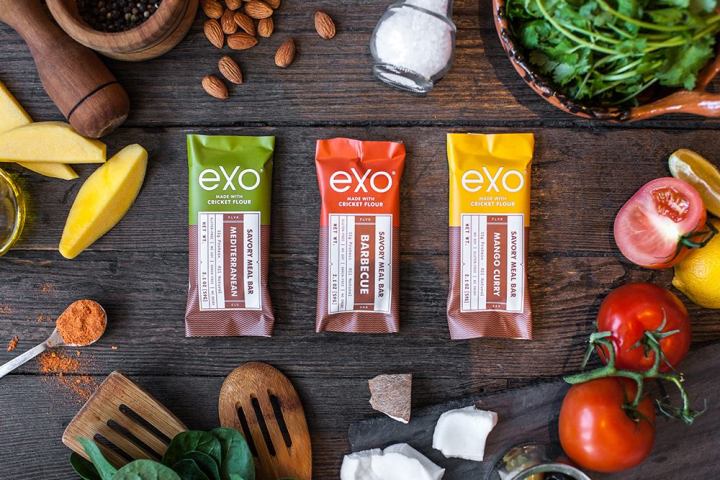
Greg Sewitz and Gabi Lewis are the entrepreneurial duo behind Exo, and they believe firmly in the possibility of bug proteins. They’re not alone – two billion people around the world today rely on insects as a source of protein. Exo got its start as a business when Sewitz and Lewis ordered a box of live crickets off the Internet, stored them in the freezer, and then turned their frozen remains into ground cricket flour that they used instead of whey powder to make protein bars. Crickets and other insects are high in protein and low in calories, and have even been hailed by the UN as a sustainable solution to global poverty and population increase issues.
Exo’s strategy for boosting popular opinion about insect proteins is to use is them in foods that people already eat. If it’s too much for someone to pop a whole cricket in his mouth, maybe it will be easier to eat a protein bar made of unrecognizable cricket flour. And beyond protein bars, Exo plans to create a series of cricket flour products that popularize the benefits of insect proteins. “We’ll use this as a replacement for whey powder, soy powder, and eventually beef and eggs”, said Sewitz.
When Sewitz and Lewis were experimenting with cricket flour protein bars in college, their product got some attention in natural food stores and from customers who were already on the insect protein bandwagon. Other startups have had success crowdfunding insect protein products in the past, so Exo knew that their idea wasn’t the craziest thing to hit the market. The company’s most recent funding round was led by Accel Foods, and resulted in an additional $4 million of investments on top of the $1.6 million Exo had already received. Considering the nutritional and environmental benefits of choosing insect proteins over cattle, the switch to cricket flour is starting to look more appealing than ever.



